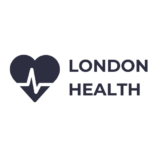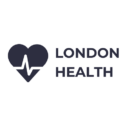Coronary heart disease affects 1 in 4 men and 1 in 6 women; it is the single biggest killer in the UK. Coronary heart disease refers to conditions that are caused when the blood supply to the heart is restricted or blocked; this is usually because the arteries are blocked by collections of fatty deposits. Over the course of time, the space for the blood to travel in the arteries become increasingly small as the fat builds up inside the vessels (this is known as atherosclerosis); when the artery becomes completely blocked, the person will probably have a heart attack (myocardial infarction).
What causes coronary heart disease?
There can be a number of different causes of coronary heart disease but most are attributed to an unhealthy lifestyle and a poor diet. Common causes of heart disease include:
- A diet high in saturated fats and sugars
- High cholesterol
- Hypertension (high blood pressure)
- Stress
- Sedentary lifestyle
- Being overweight or obese
- Smoking (chemicals in cigarettes cause deposits to build around the insides of the arteries and carbon monoxide damages the heart by making it work too fast)
- Excessive drinking
- Coronary thrombosis (a blood clot inside the coronary artery)
- Family history of heart conditions
What are the symptoms of coronary heart disease?
Symptoms usually depend on the nature of the blockage in the arteries; if the arteries are only partially blocked a patient may experience angina and heart palpitations, but if the arteries are completely blocked they will probably have a heart attack or suffer from heart failure.
- Symptoms of angina include tightening in the chest, quick bouts of chest pain (these usually last a few minutes), pain that may extend to the arms, back, jaw and neck.
- Symptoms of heart palpitations: heart palpitations are caused by an irregular heart beat; it usually feels like the heart is racing and you may feel dizzy, nauseous and tingly.
- Symptoms of heart failure: heart failure occurs when the heart becomes so weak that it cannot pump blood around the body any longer; it is usually characterised by difficulty with breathing. Heart failure can be acute, meaning it develops quickly, or chronic, meaning it develops over a period of time.
- Symptoms of a heart attack: a heart attack can happen at any time and in any place; it should be treated as a medical emergency. Common symptoms include pain in the chest which may radiate to the arms, neck and back, dizziness, nausea and difficulty with breathing.
How is coronary heart disease treated?
There are a number of treatments available; the treatment will depend on the severity of the individual case and the nature of the illness.
Medication:
In many cases, the symptoms of heart disease can be treated using medication (this usually involves medication to thin the blood, prevent clotting, lower cholesterol, control heart rhythms and reduce blood pressure.) A nitrate spray is usually given to patients that suffer from angina; this usually provides a quick solution to the symptoms of angina.
Surgery
Many patients with heart disease may require surgery to restore function of the heart; surgery is usually carried out to remove blockages from the arteries and open the arteries up so that blood can flow more easily. Surgical procedures include
- Coronary angioplasty: this is used to treat mild heart disease. It involves opening up an artery that is partially blocked to allow the blood to flow through the coronary artery more easily.
- Coronary artery bypass: this procedure involves diverting the flow of blood around the portion of the artery that is blocked. It is usually carried out on patients that have severe heart disease. It is a complex procedure but the success rates are usually very high.
- Heart transplant: this involves replacing the existing heart with a donor heart. Healthy donor hearts are very short in supply so people waiting for a heart transplant may have to wait for a long period of time. Heart transplants are usually seen as a last resort and are only carried out when the heart is so damaged that it can no longer pump blood around the body.

